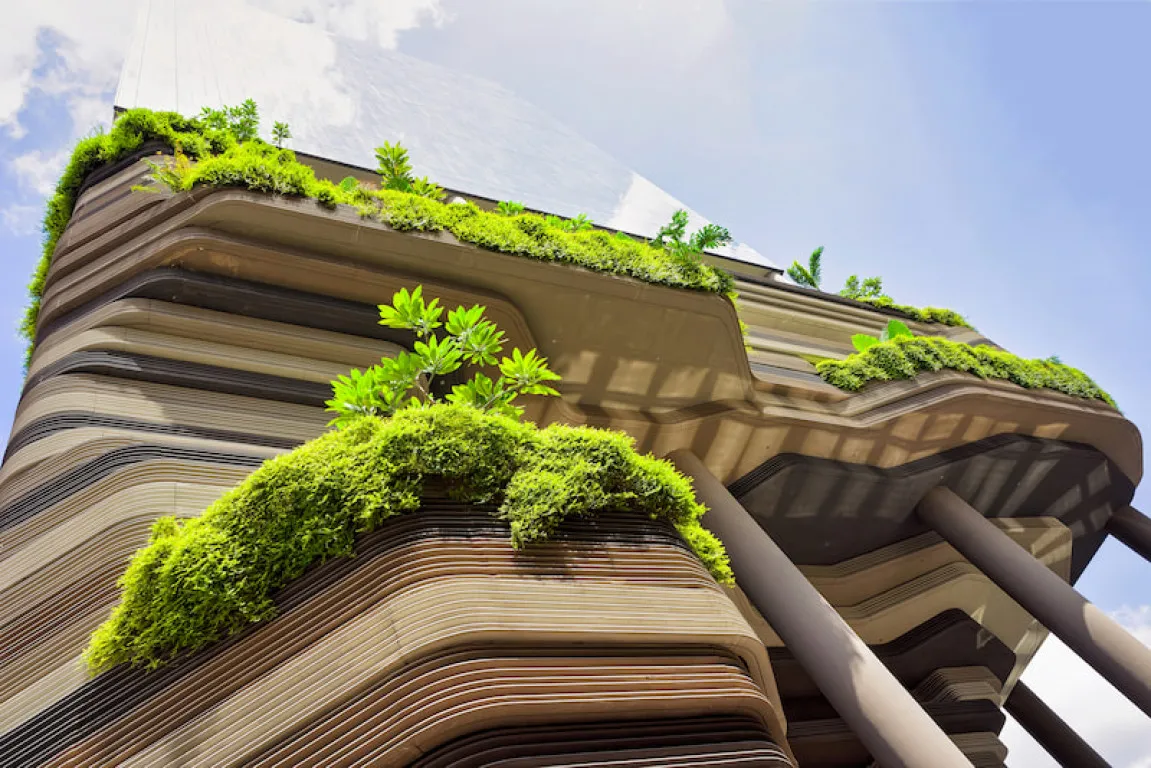Green building is now getting popular as a solution to create a more eco-friendly and sustainable environment. With the rising awareness of the impact of construction on Earth, the green building concept is often used to reduce energy consumption, the use of environmentally damaging materials, and create healthier spaces for its occupants.
As demand for environmentally friendly buildings using natural materials increases, many developers and architects are turning to green building principles in every development project. Through this article, you will learn more about what green building is, its benefits, criteria, and some examples of buildings that implement it. Therefore, see the information below!
What Is Green Building?
A green building is a building constructed and operated with high consideration for the environment. This concept aims to maintain nature and the environment. In the construction process, the green building concept focuses on the optimal use of natural resources. This means that non-natural materials are used as little as possible. To actualize a green building, collaboration between architects and contractors is very important.
Several criteria must be met when constructing a green building, such as efficient use of water and natural resources, utilization of renewable energy, and reduction of pollution and waste.
The goal is to create a better and more sustainable living environment. To ensure that green buildings have recognized standards, it is important to obtain certification from a trusted company in this field.
Read also: Bamboo, Natural Building Material for Your Home
The Advantages of Green Building
Green building is here as an innovative solution for embracing the construction challenges, especially the environmentally friendly ones. This concept not only prioritizes energy and resource efficiency but also highly contributes to creating a healthier and more sustainable environment. Then, what are the advantages of green building? Below are the explanations:
1. Increasing Quality of Life
Green buildings are designed to improve the quality of life by creating an environment that supports the health of its occupants. For example, buildings with this concept optimize access to sunlight beneficial for the body and ensures smooth air circulation.
2. Saving Water Resources
This building concept applies sustainable principles that prioritize water efficiency, including the use of alternatives, like rainwater. The impact is not only felt by the occupants but also supports the availability of clean water in the future.
3. Saving Operational Budget
Another benefit of the green building concept is the reduction of operational costs, especially in terms of electricity. With the installation of solar panels, green buildings can save more than 10% of electricity costs every day, which significantly reduces electricity bills and overall operational costs.
4. Reducing Carbon Footprint
The next advantage is reducing the carbon footprint which highly contributes to environmental damage, including global warming. The green building concept helps minimize carbon emissions. As a result, it can contribute to the atmosphere and Earth's preservation.
5. Increasing Building’s Durability
Last but not least, implementing the green building concept will result in a more durable and long-lasting building due to the use of high-quality construction materials. For example, some green buildings implement the concept of a growing house, which allows the building to grow over time.
Read more: 5 Earthquake Proof Building Material for Construction
Green Building Criteria
To build a green building, several criteria must be met because they are the basis for designing and constructing environmentally friendly buildings, efficient in energy use, and can provide comfort for their occupants. Here are some of the main criteria to consider:
1. Appropriate Site Development
This criterion focuses on the selection of building land that supports sustainability and is environmentally friendly. Proper land use can reduce negative impacts on the environment, and if managed wisely, can have a positive impact on the surrounding environment.
2. Energy Efficiency and Conservation
This criterion considers the energy conservation and efficiency in a construction. Energy efficiency is achieved using technology needing less energy for the same functions, such as turning the machine off and setting the AC temperature.
3. Water Conservation
This criterion considers how efficient and conservative the water use in the building is. The excessive water use and water pollution can damage the quantity and quality of the water. Although the hydrology process can make the water better, pollution and excessive use will accelerate damage that exceeds nature's ability to restore it.
4. Material Resources and Cycle
The next criterion is material resources and cycle. It evaluates the selection of materials, which should focus on eco-friendly materials to prevent ecosystem damage. Green building materials can be used or recycled materials. In addition, this criterion also considers the global impact of the materials used.
5. Indoor Air Health and Comfort
This criterion focuses on the health and comfort aspects of the building. Efficient energy use does not mean sacrificing lighting or comfort in activities. Ideally, natural lighting can be maximized with large window designs facing the sun, while good air circulation prevents the room from feeling stuffy. That way, you can create a healthy and comfortable environment to support occupant activities.
6. Building and Environment Management
Lastly, the building and environment management criterion aims to lead green building management to stay environmentally friendly. This includes maintaining the environmental quality caused by the construction, providing operational information for the occupants, supporting integrated waste management to reduce the burden on landfills, and increasing the security and safety of the occupants.
Examples of Green Buildings
In Indonesia, several green buildings are owning Greenship certification from Green Building Council Indonesia, such as:
- Sequis Center.
- Menara BCA Jakarta.
- Sampoerna Strategic Square.
- Kementerian Pekerjaan Umum.
- Gedung TerasKita.
- Pacific Place.
- L'oreal Indonesia.
- Gedung Mina Bahari IV Kementerian Kelautan dan Perikanan.
- Alamanda Tower.
- Wisma Subiyanto.
By understanding the concept of green building and its benefits, you can better appreciate the importance of switching to more environmentally friendly buildings. Not only does it have a positive impact on the planet, but it also improves the quality of life of its occupants.
If you are interested in supporting your green building with eco-friendly materials, you can use Semen Merah Putih Flexiplus, Durapro, and Ecopro. These products are not only excellent in quality but also low in carbon emission, making them ideal for sustainable construction and supporting energy efficiency
Flexiplus has three types you can use based on your needs, General Use(GU) for general construction application, Moderate Sulfate (MS) for sulfate resistance, and High Early Strength (HE) for high early strength requirements. With proper setting, the construction is easier and more flexible in facing several weather changes and construction projects.
Furthermore, Flexiplus also has an impressive pressure strength from day one for optimal strength in 28 days. Also, this product is low in carbon emissions. For more information about Semen Merah Putih Flexiplus, Durapro, and Ecopro as well as how our products can fulfill your construction needs, contact us now! We are ready to help you create sustainable and green buildings!
Read also: 5 Building Material Types for Room Partition



